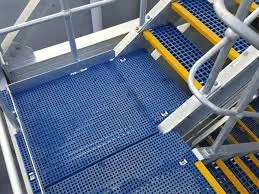
-
 Afrikaans
Afrikaans -
 Albanian
Albanian -
 Amharic
Amharic -
 Arabic
Arabic -
 Armenian
Armenian -
 Azerbaijani
Azerbaijani -
 Basque
Basque -
 Belarusian
Belarusian -
 Bengali
Bengali -
 Bosnian
Bosnian -
 Bulgarian
Bulgarian -
 Catalan
Catalan -
 Cebuano
Cebuano -
 China
China -
 China (Taiwan)
China (Taiwan) -
 Corsican
Corsican -
 Croatian
Croatian -
 Czech
Czech -
 Danish
Danish -
 Dutch
Dutch -
 English
English -
 Esperanto
Esperanto -
 Estonian
Estonian -
 Finnish
Finnish -
 French
French -
 Frisian
Frisian -
 Galician
Galician -
 Georgian
Georgian -
 German
German -
 Greek
Greek -
 Gujarati
Gujarati -
 Haitian Creole
Haitian Creole -
 hausa
hausa -
 hawaiian
hawaiian -
 Hebrew
Hebrew -
 Hindi
Hindi -
 Miao
Miao -
 Hungarian
Hungarian -
 Icelandic
Icelandic -
 igbo
igbo -
 Indonesian
Indonesian -
 irish
irish -
 Italian
Italian -
 Japanese
Japanese -
 Javanese
Javanese -
 Kannada
Kannada -
 kazakh
kazakh -
 Khmer
Khmer -
 Rwandese
Rwandese -
 Korean
Korean -
 Kurdish
Kurdish -
 Kyrgyz
Kyrgyz -
 Lao
Lao -
 Latin
Latin -
 Latvian
Latvian -
 Lithuanian
Lithuanian -
 Luxembourgish
Luxembourgish -
 Macedonian
Macedonian -
 Malgashi
Malgashi -
 Malay
Malay -
 Malayalam
Malayalam -
 Maltese
Maltese -
 Maori
Maori -
 Marathi
Marathi -
 Mongolian
Mongolian -
 Myanmar
Myanmar -
 Nepali
Nepali -
 Norwegian
Norwegian -
 Norwegian
Norwegian -
 Occitan
Occitan -
 Pashto
Pashto -
 Persian
Persian -
 Polish
Polish -
 Portuguese
Portuguese -
 Punjabi
Punjabi -
 Romanian
Romanian -
 Russian
Russian -
 Samoan
Samoan -
 Scottish Gaelic
Scottish Gaelic -
 Serbian
Serbian -
 Sesotho
Sesotho -
 Shona
Shona -
 Sindhi
Sindhi -
 Sinhala
Sinhala -
 Slovak
Slovak -
 Slovenian
Slovenian -
 Somali
Somali -
 Spanish
Spanish -
 Sundanese
Sundanese -
 Swahili
Swahili -
 Swedish
Swedish -
 Tagalog
Tagalog -
 Tajik
Tajik -
 Tamil
Tamil -
 Tatar
Tatar -
 Telugu
Telugu -
 Thai
Thai -
 Turkish
Turkish -
 Turkmen
Turkmen -
 Ukrainian
Ukrainian -
 Urdu
Urdu -
 Uighur
Uighur -
 Uzbek
Uzbek -
 Vietnamese
Vietnamese -
 Welsh
Welsh -
 Bantu
Bantu -
 Yiddish
Yiddish -
 Yoruba
Yoruba -
 Zulu
Zulu
the importance of frp launder in modern water treatment
The Importance of FRP Launder in Modern Water Treatment
Fiber-Reinforced Plastic (FRP) is becoming an essential material in the field of water treatment, particularly in the design and construction of launders. A launder is crucial in the process of transporting water and facilitating the removal of sediments in treatment plants. As water treatment facilities evolve to meet increasing demands for clean water, the incorporation of FRP technology offers numerous benefits that enhance efficiency and sustainability.
One of the primary advantages of using FRP for launders is its corrosion resistance. Traditional materials like steel or concrete can deteriorate over time due to exposure to harsh chemicals and the moisture inherent in water treatment processes. In contrast, FRP resists corrosion, ensuring a longer lifespan and reducing maintenance costs. This durability means that water treatment plants can operate more efficiently without the constant need for repairs and replacements, ultimately lowering operational expenses.
Furthermore, FRP is lightweight yet strong, making it easier to transport and install compared to heavier materials. This attribute not only speeds up the construction process but also allows for greater design flexibility. Engineers can create customized shapes and sizes for launders that optimize water flow dynamics and improve sediment removal efficiency. As a result, facilities can enhance their overall treatment effectiveness, ensuring higher quality water standards.
the importance of frp launder in modern water treatment

Another significant benefit of FRP launders is their smooth surface finish, which reduces turbulence and minimizes energy consumption during water flow. This efficiency translates to lower operational costs and a smaller environmental footprint. Additionally, the non-porous nature of FRP minimizes the growth of biofilms and algae, leading to reduced chemical usage and improved water quality.
In the context of sustainability, the use of FRP can contribute to more environmentally friendly water treatment practices. By decreasing energy consumption and extending the service life of equipment, FRP launders play a vital role in reducing the ecological impact of water treatment facilities.
In conclusion, fiber-reinforced plastic launders are pivotal in modern water treatment processes. Their corrosion resistance, light weight, design flexibility, smooth surfaces, and sustainability features make them an essential component in the quest for efficient and cost-effective water treatment solutions. As communities continue to address the challenges of water quality and availability, the adoption of advanced materials like FRP will undoubtedly prove beneficial in ensuring safe and clean water for all.









